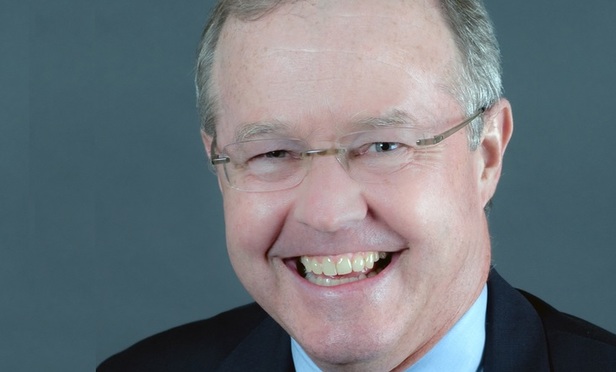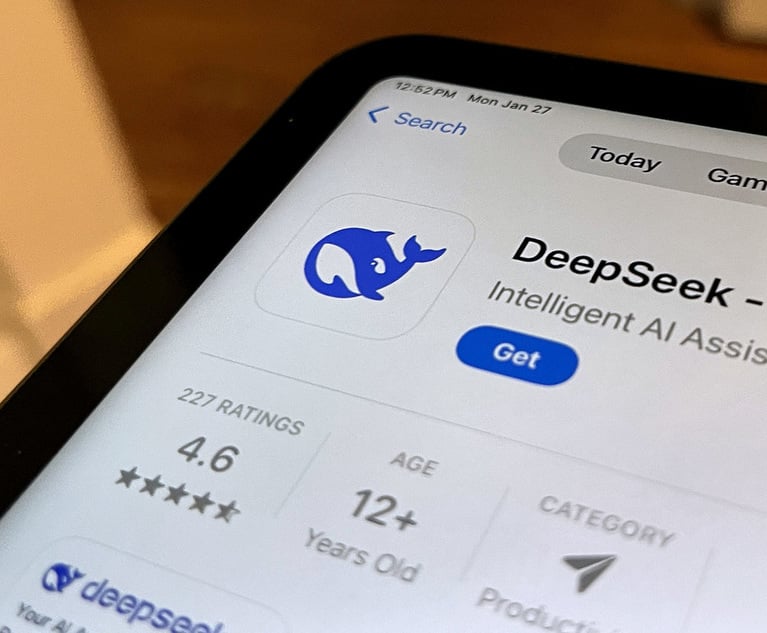'You have to be ruthless about who makes equity partner' – Shearman gambles on non-equity partners
Shearman's partnership shake-up is likely to boost profits – but what are the risks?
October 17, 2016 at 01:06 AM
7 minute read
 Shearman & Sterling senior partner Creighton Condon
Shearman & Sterling senior partner Creighton Condon
As it struggles to maintain its standing among New York's elite firms, Shearman & Sterling is trying a new tactic: expanding its non-equity partner ranks. The move is likely to increase the firm's profitability, at least in the short term. But it also carries risks.
Shearman announced last month that it is creating an expanded non-equity partner role for junior partners. The firm has also confirmed that it will be de-equitising some partners.
With these changes, Shearman is increasingly breaking ranks with most of its Wall Street brethren, where nearly all partners are equity partners. Many firms outside New York have a two-tier partnership structure. But even among those, few have a mandatory non-equity track for junior partners. Kirkland & Ellis is the most visible example of a firm that has used this structure for decades, with great success.
According to people familiar with such a system, making it work requires a high degree of discipline. "The danger for any firm establishing a new class of non-equity partner is it becomes a dumping ground for people who are not living up to expectations," says consultant Kent Zimmermann of the Zeughauser Group.
"If you have a non-equity tier, you want people who are moving up or people coming down for a limited time before they retire or transition out. Or perhaps you have people with special circumstances for a limited duration or who have a special skill," Zimmermann says. "If someone is not in those categories, it's better not to have them [in the firm]."
Shearman said in a statement that newly promoted partners had always started in a non-equity role, but that "the programme has been expanded to allow more lawyers to become partners at the non-equity level". When asked if associates will now be eligible to become non-equity partners at an earlier stage, the firm said that "consideration for non-equity status will depend on the development of the individual associate" and that there is no set period of time before someone can be elevated from non-equity to equity status.
"The new role will allow junior partners to grow into equity partnership and facilitate the continued growth of our practices globally," Shearman said. "We believe this change will provide significant benefits for the firm."
The danger for any firm establishing a new class of non-equity partner is it becomes a dumping ground for people who are not living up to expectations
Last year, Shearman, which ranked 36th in profits per partner on the Am Law 100, reported having 26 non-equity partners. Of the 10 most profitable New York-based firms, only Cahill Gordon & Reindel has a small non-equity tier, with 62 equity partners and 10 non-equity.
Zimmermann offers one reason why New York's top firms have shied away from adopting non-equity tiers. "Wall Street firms are able to get the cream-of-the-crop associates more easily," he says. "[Those associates] are willing to stick around longer for the brass rings. The money and prestige keeps them around. They do work that non-equity partners might do at other firms."
Shearman's management, led by senior partner Creighton Condon and global managing partner David Beveridge, has been under pressure to stem weakening profits and prominent partner departures. Last year, the firm's profits per partner dropped nearly 4% to $1.835m (£1.5m), which is well below all the other major New York-based firms. Compensation for all partners, including non-equity, was $1.675m (£1.38m).
Up or out?
Shearman announced the changes to its partnership structure last month in a firm-wide email, obtained by Above the Law, titled 'Accelerating Our Strategy'. The firm stated that management had decided to "create a new non-equity partner role" that would "allow junior partners to grow into equity partnership".
It is not clear how many other firms in the Am Law 200 besides Kirkland require lawyers to pass through a non-equity tier before they can make equity partner. One that does is Goodwin Procter, which declined to discuss its system. Firms that have non-equity partners but do not follow this model include Latham & Watkins, Gibson Dunn & Crutcher, and Weil Gotshal & Manges.
At Kirkland, associates can become a non-share partner, as they are called, after six years of practice. Earlier this month, Kirkland announced a new class of 81 non-share partners. Four years after becoming a non-share partner they are considered for equity status. Typically, 20% of those who become non-share partners make the cut, according to two former partners. With a few exceptions, it's up or out.
Kirkland declined to discuss this structure but several former partners say it works well for the firm and its young lawyers. One says it gives lawyers a better platform to develop business at an early age, while allowing the firm more time to evaluate talent. "It's very helpful for generating business to have earned that title [of partner]," he says. "You have the next three to four years to prove your business case."
A second former partner points out that lawyers with the title of partner can usually land better in-house jobs if they decide to move on, which helps the lawyer and the firm. "You can come into companies at more senior level and be in a better position to feed work back to the firm," he says.
Kirkland's non-share partners make a small fraction of the compensation that goes to equity partners. Based on American Lawyer reporting, these partners make less than $500,000 (£411,000) on average, compared to the $3.6m (£3m) average profits per equity partner reflected in Am Law 100 figures for 2015.
"The firm makes a tonne of money on [the non-share partners], and they work a tonne of hours," said former Kirkland equity partner Paul Cappuccio, the executive vice-president and general counsel of Time Warner, in a 2013 American Lawyer article. "It is the engine [of the firm]. It is genius."
While the model works well for Kirkland, New York's top-tier firms have not embraced it. "The idea of a Cravath or a Sullivan & Cromwell sullying their partnership with non-equity ranks; well, I don't think it's something they would consider," says one former Kirkland partner.
A partner at one major New York firm says his firm considered creating a non-equity tier but decided against it. "If it's up or out, and if you have to leave after three years, that creates instability with lots of [non-equity] partners leaving," he says. The partner also recalled that the firm made a list of all the firms that still had a one-tier structure, and was concerned about losing status if it fell off this list.
Consultant Joel Henning says he does not see many Wall Street firms following Shearman's move. "Given the nature of their client base and their brand, they can continue to attract top quality associates. So they can maintain a one-tier system," he says.
For others with two-tier systems, Henning offers some advice. Many firms, he says, are not "rigourous enough" about who ascends to the top. "You have to be ruthless about who makes equity partner," he says.
This content has been archived. It is available through our partners, LexisNexis® and Bloomberg Law.
To view this content, please continue to their sites.
Not a Lexis Subscriber?
Subscribe Now
Not a Bloomberg Law Subscriber?
Subscribe Now
NOT FOR REPRINT
© 2025 ALM Global, LLC, All Rights Reserved. Request academic re-use from www.copyright.com. All other uses, submit a request to [email protected]. For more information visit Asset & Logo Licensing.
You Might Like
View All
DeepSeek and the AI Revolution: Why One Legal Tech Expert Is Hitting Pause
4 minute read
What Happens When a Lateral Partner's Guaranteed Compensation Ends?

Lawyers React To India’s 2025 Budget, Welcome Investment And Tax Reform

Russia’s Legal Sector Is Changing as Western Sanctions Take Their Toll
5 minute readTrending Stories
- 1States Accuse Trump of Thwarting Court's Funding Restoration Order
- 2Microsoft Becomes Latest Tech Company to Face Claims of Stealing Marketing Commissions From Influencers
- 3Coral Gables Attorney Busted for Stalking Lawyer
- 4Trump's DOJ Delays Releasing Jan. 6 FBI Agents List Under Consent Order
- 5Securities Report Says That 2024 Settlements Passed a Total of $5.2B
Who Got The Work
J. Brugh Lower of Gibbons has entered an appearance for industrial equipment supplier Devco Corporation in a pending trademark infringement lawsuit. The suit, accusing the defendant of selling knock-off Graco products, was filed Dec. 18 in New Jersey District Court by Rivkin Radler on behalf of Graco Inc. and Graco Minnesota. The case, assigned to U.S. District Judge Zahid N. Quraishi, is 3:24-cv-11294, Graco Inc. et al v. Devco Corporation.
Who Got The Work
Rebecca Maller-Stein and Kent A. Yalowitz of Arnold & Porter Kaye Scholer have entered their appearances for Hanaco Venture Capital and its executives, Lior Prosor and David Frankel, in a pending securities lawsuit. The action, filed on Dec. 24 in New York Southern District Court by Zell, Aron & Co. on behalf of Goldeneye Advisors, accuses the defendants of negligently and fraudulently managing the plaintiff's $1 million investment. The case, assigned to U.S. District Judge Vernon S. Broderick, is 1:24-cv-09918, Goldeneye Advisors, LLC v. Hanaco Venture Capital, Ltd. et al.
Who Got The Work
Attorneys from A&O Shearman has stepped in as defense counsel for Toronto-Dominion Bank and other defendants in a pending securities class action. The suit, filed Dec. 11 in New York Southern District Court by Bleichmar Fonti & Auld, accuses the defendants of concealing the bank's 'pervasive' deficiencies in regards to its compliance with the Bank Secrecy Act and the quality of its anti-money laundering controls. The case, assigned to U.S. District Judge Arun Subramanian, is 1:24-cv-09445, Gonzalez v. The Toronto-Dominion Bank et al.
Who Got The Work
Crown Castle International, a Pennsylvania company providing shared communications infrastructure, has turned to Luke D. Wolf of Gordon Rees Scully Mansukhani to fend off a pending breach-of-contract lawsuit. The court action, filed Nov. 25 in Michigan Eastern District Court by Hooper Hathaway PC on behalf of The Town Residences LLC, accuses Crown Castle of failing to transfer approximately $30,000 in utility payments from T-Mobile in breach of a roof-top lease and assignment agreement. The case, assigned to U.S. District Judge Susan K. Declercq, is 2:24-cv-13131, The Town Residences LLC v. T-Mobile US, Inc. et al.
Who Got The Work
Wilfred P. Coronato and Daniel M. Schwartz of McCarter & English have stepped in as defense counsel to Electrolux Home Products Inc. in a pending product liability lawsuit. The court action, filed Nov. 26 in New York Eastern District Court by Poulos Lopiccolo PC and Nagel Rice LLP on behalf of David Stern, alleges that the defendant's refrigerators’ drawers and shelving repeatedly break and fall apart within months after purchase. The case, assigned to U.S. District Judge Joan M. Azrack, is 2:24-cv-08204, Stern v. Electrolux Home Products, Inc.
Featured Firms
Law Offices of Gary Martin Hays & Associates, P.C.
(470) 294-1674
Law Offices of Mark E. Salomone
(857) 444-6468
Smith & Hassler
(713) 739-1250








